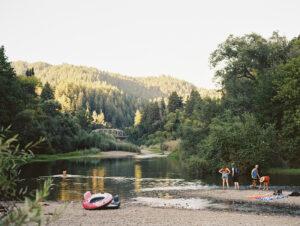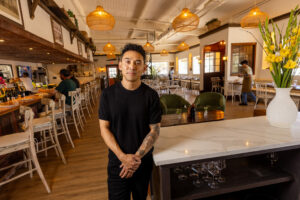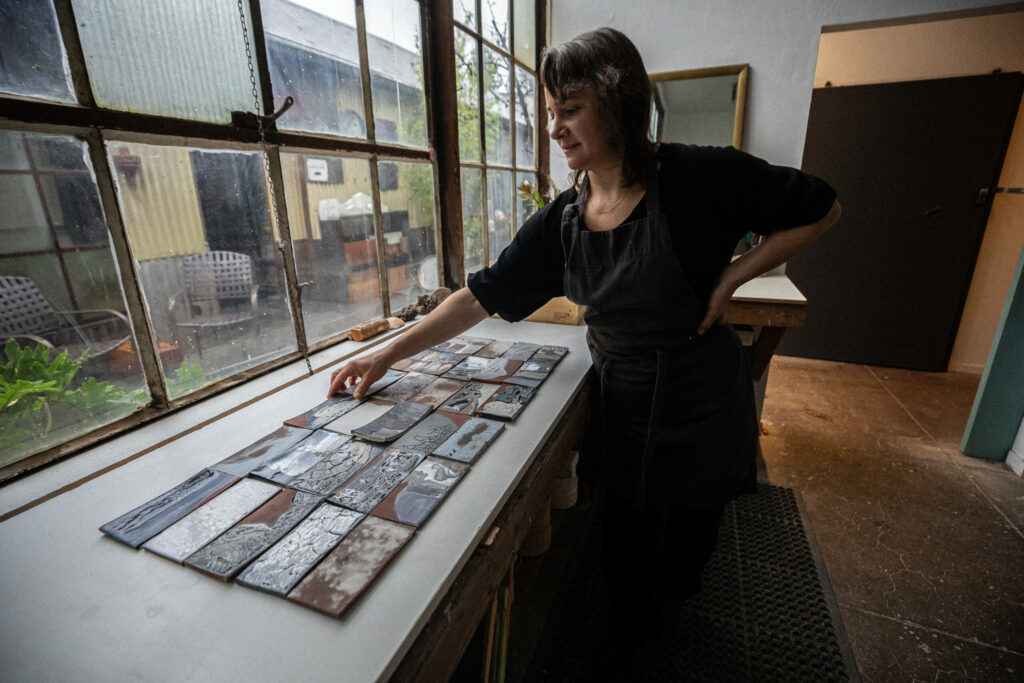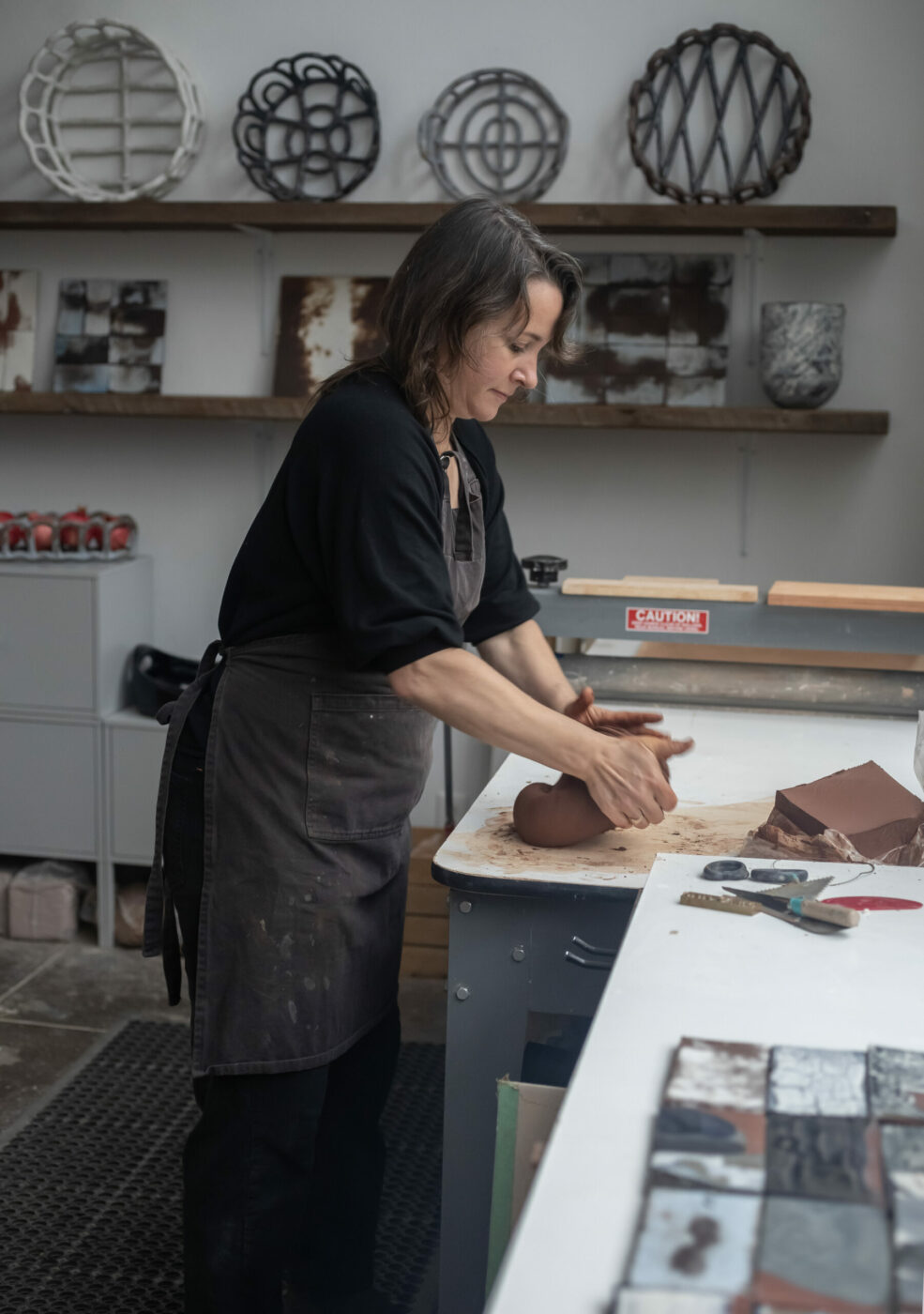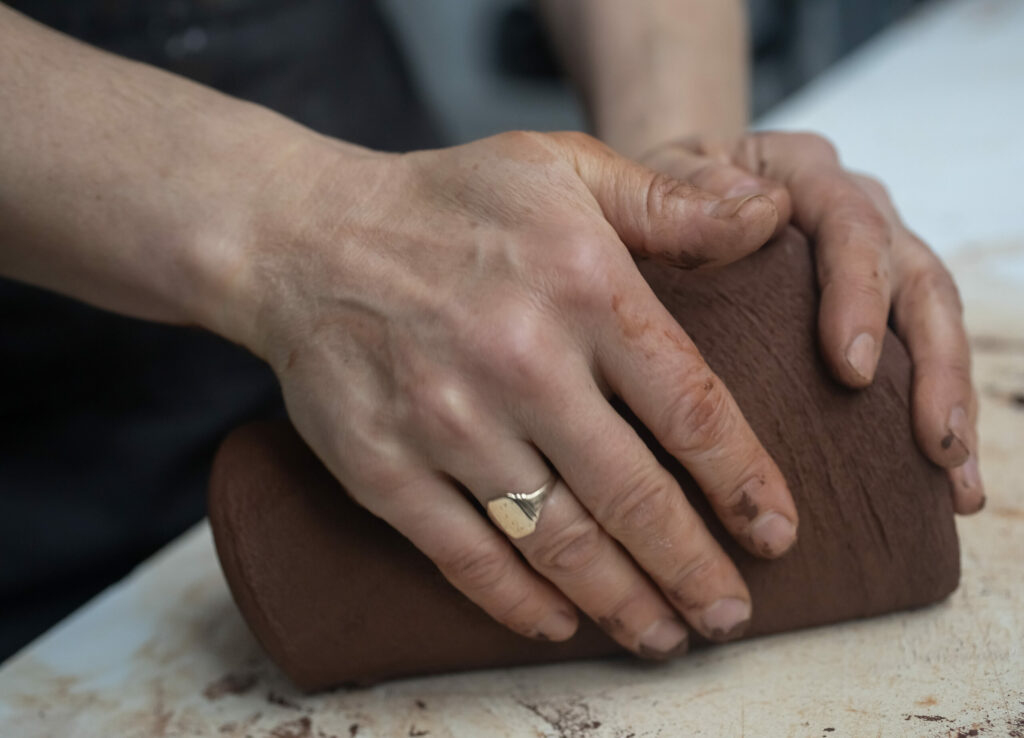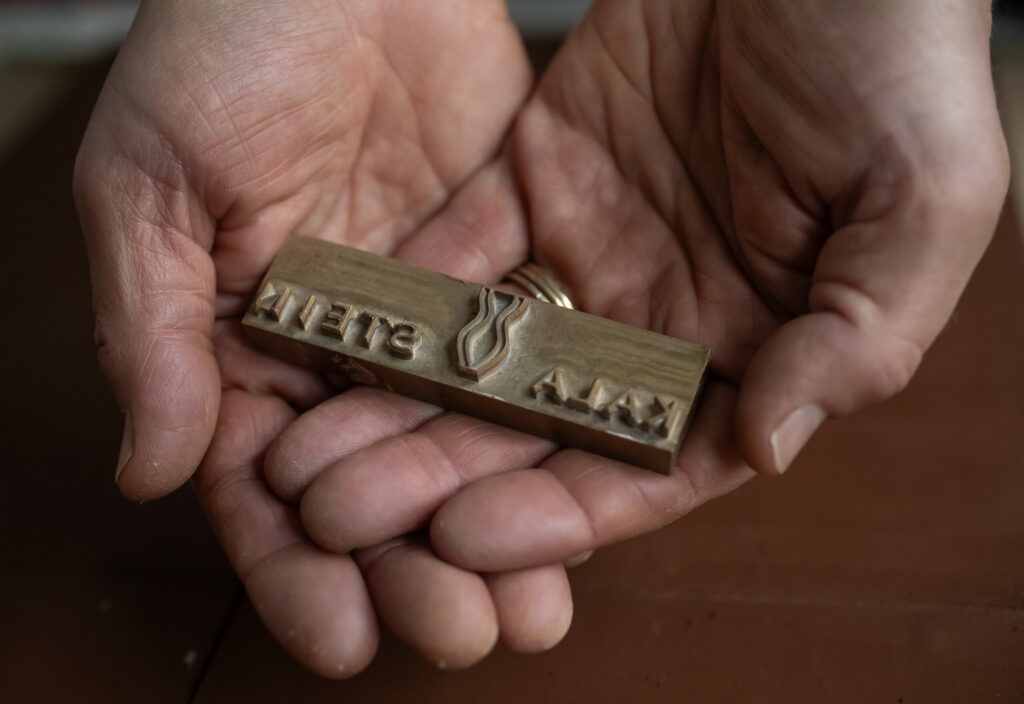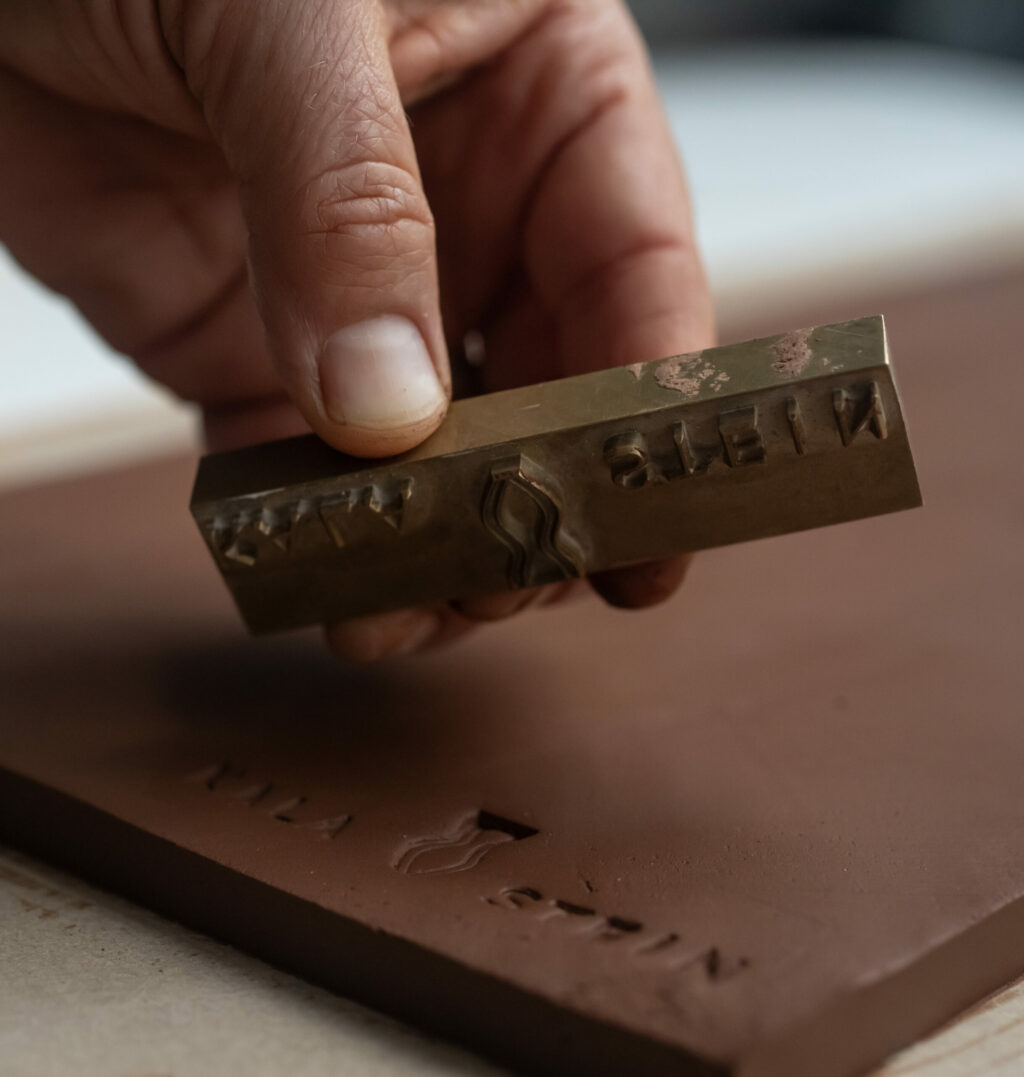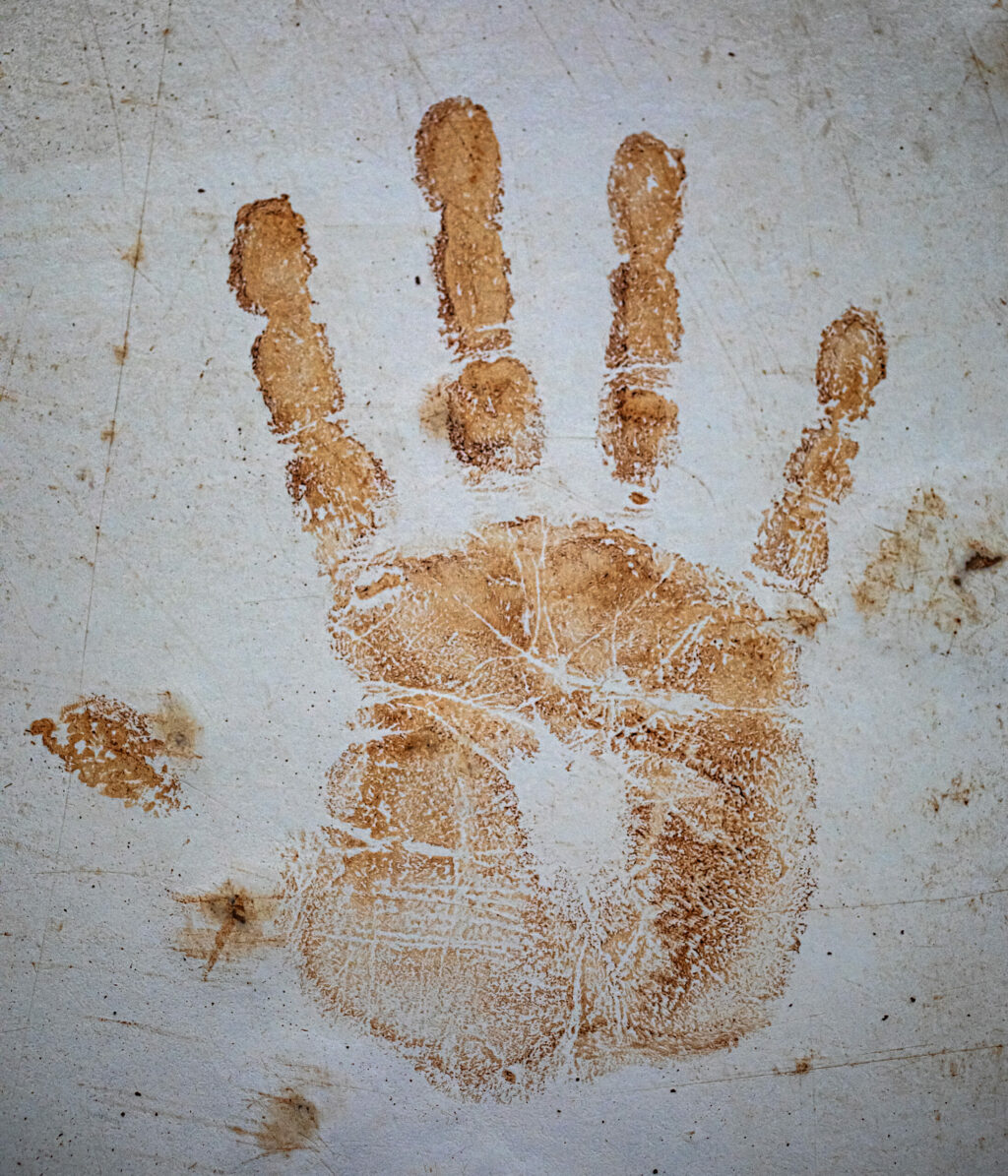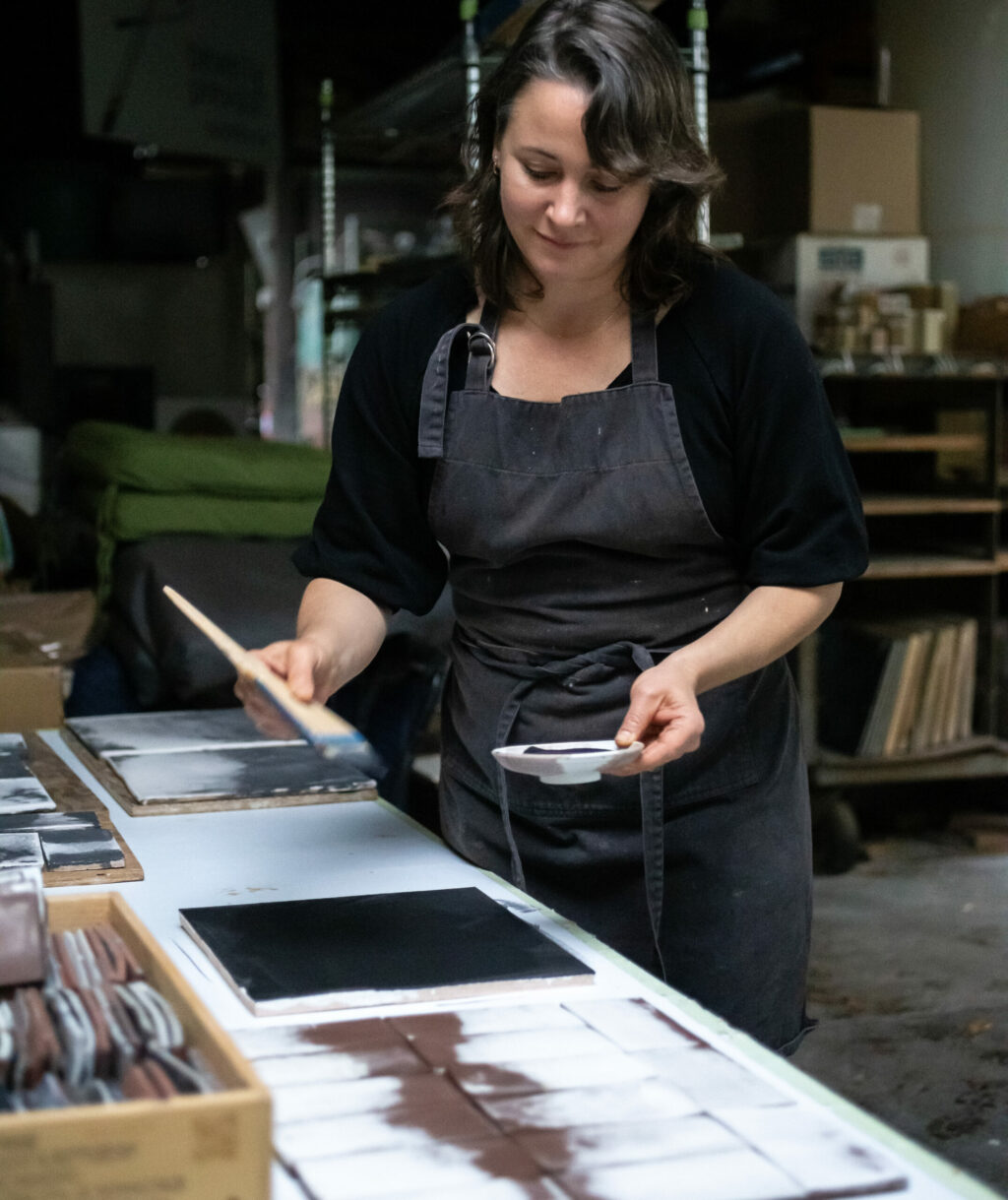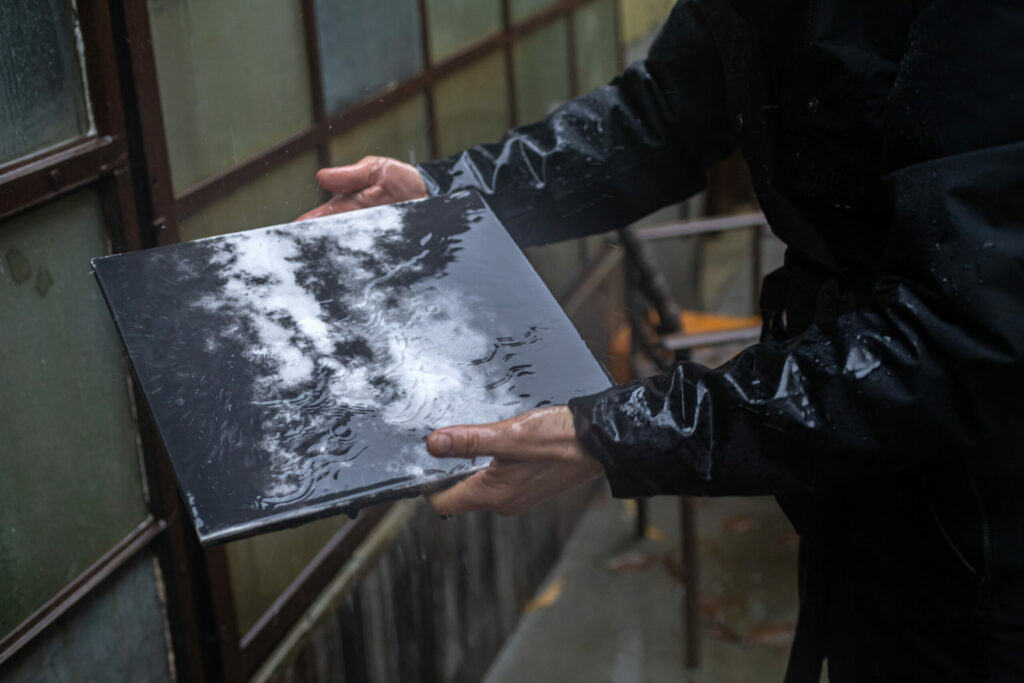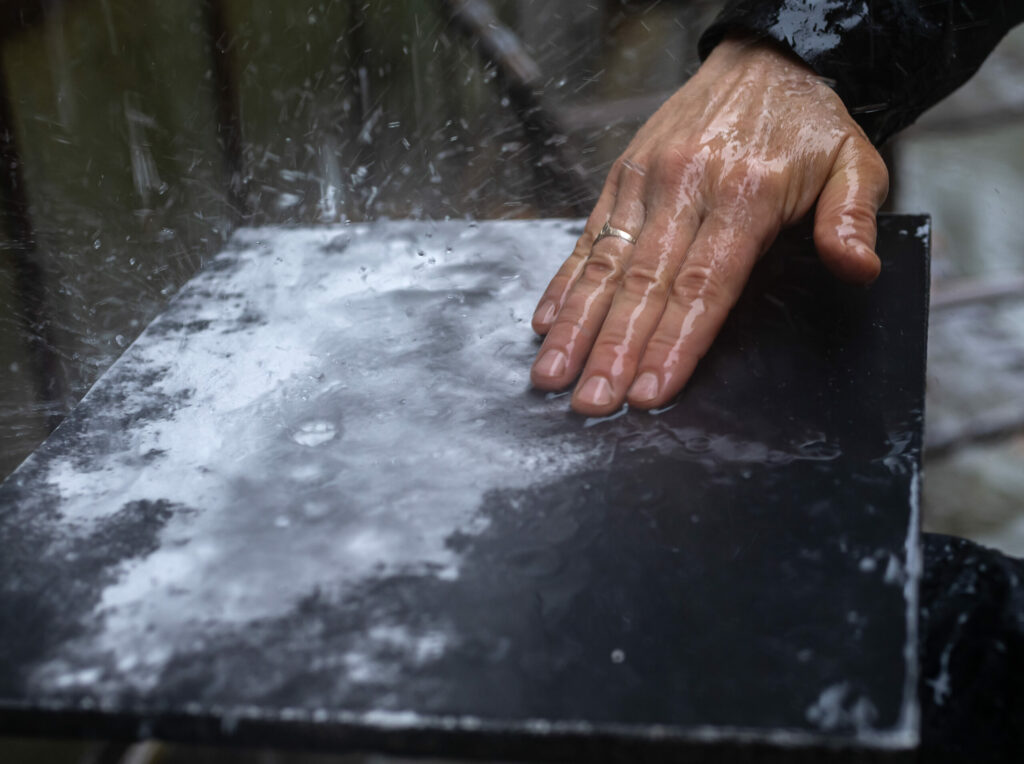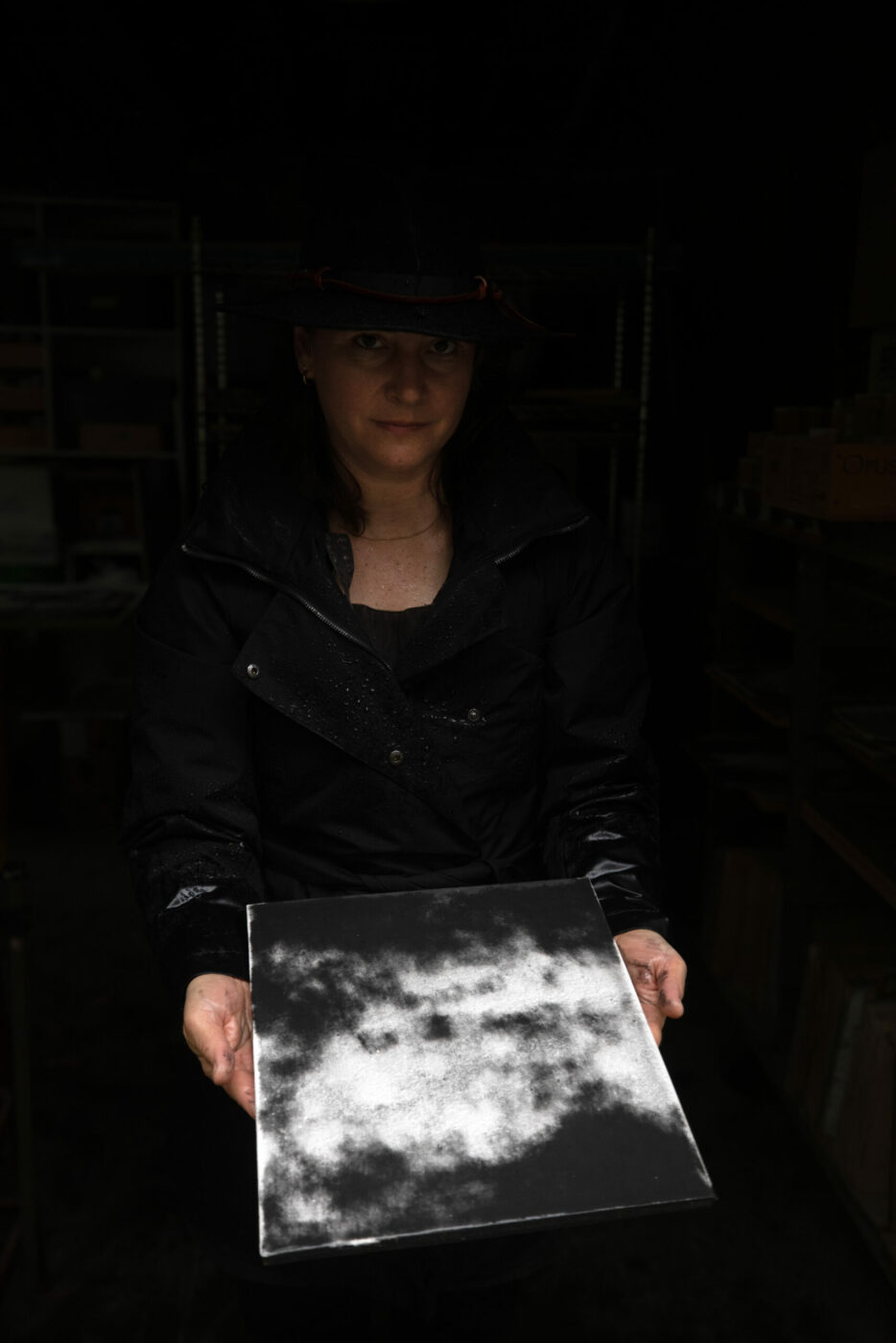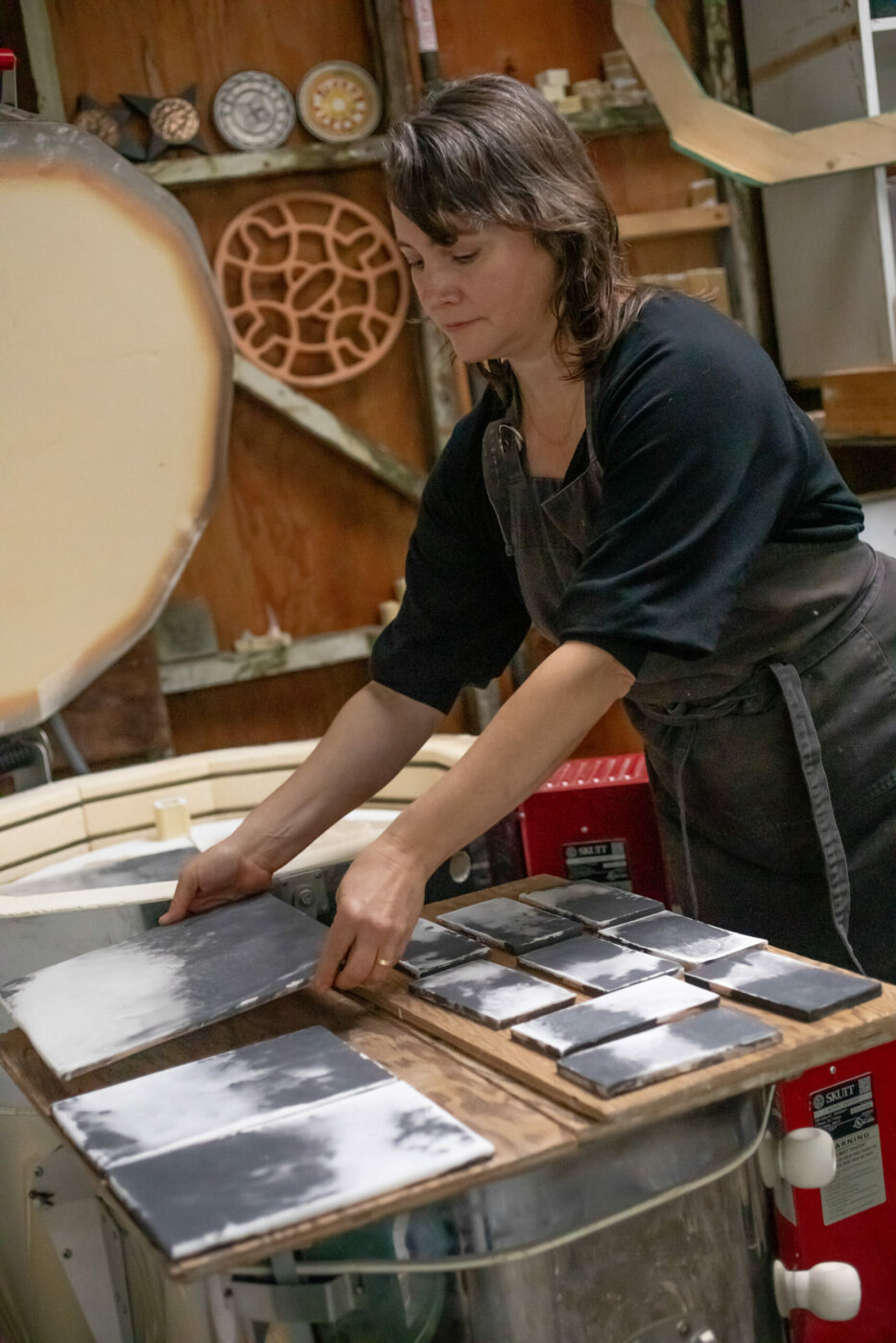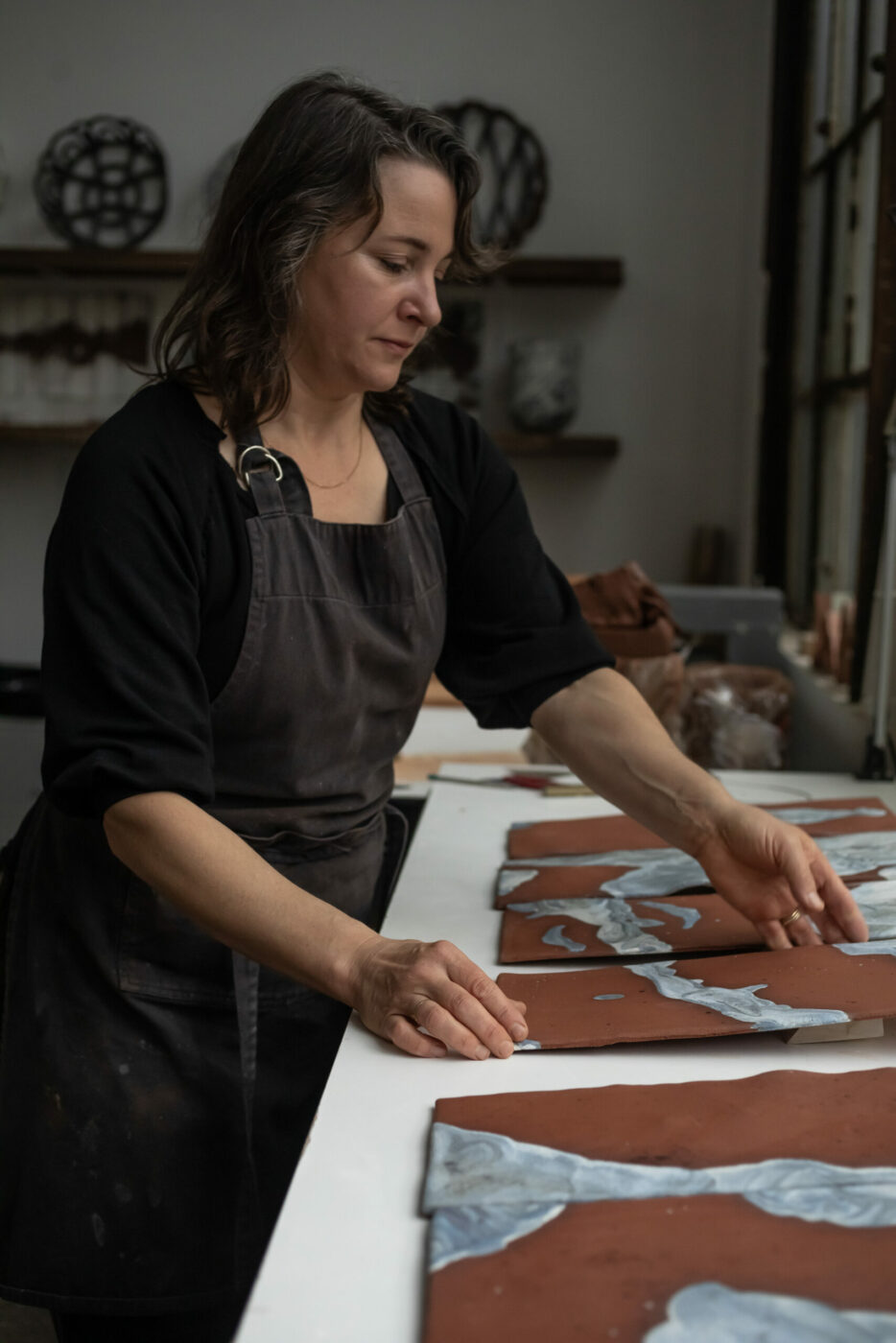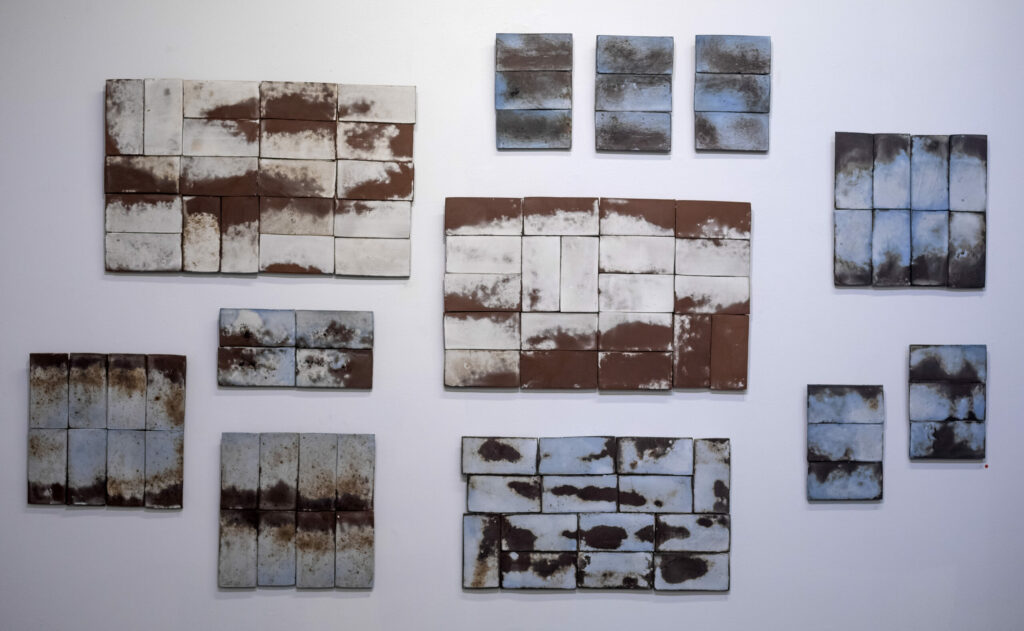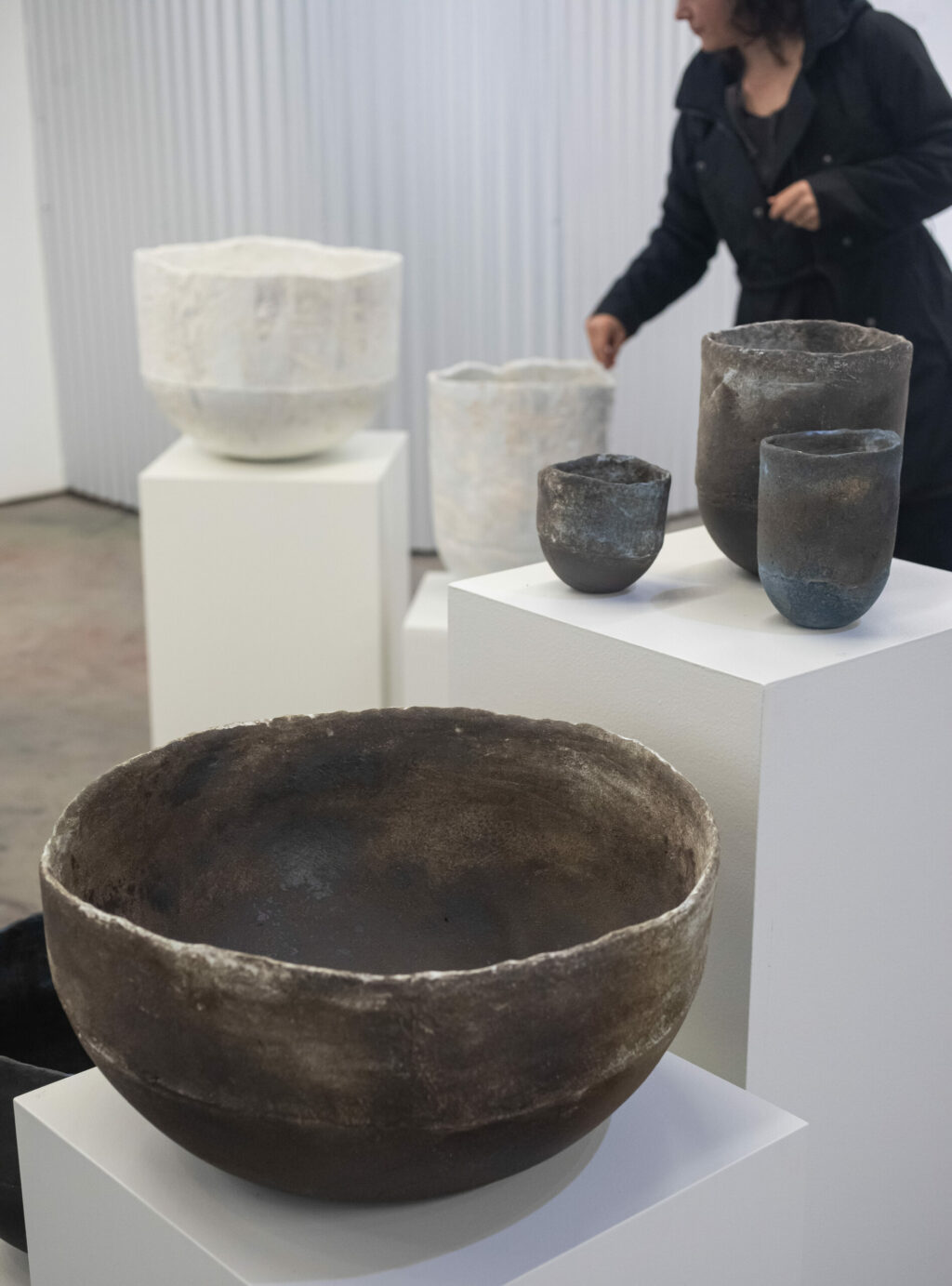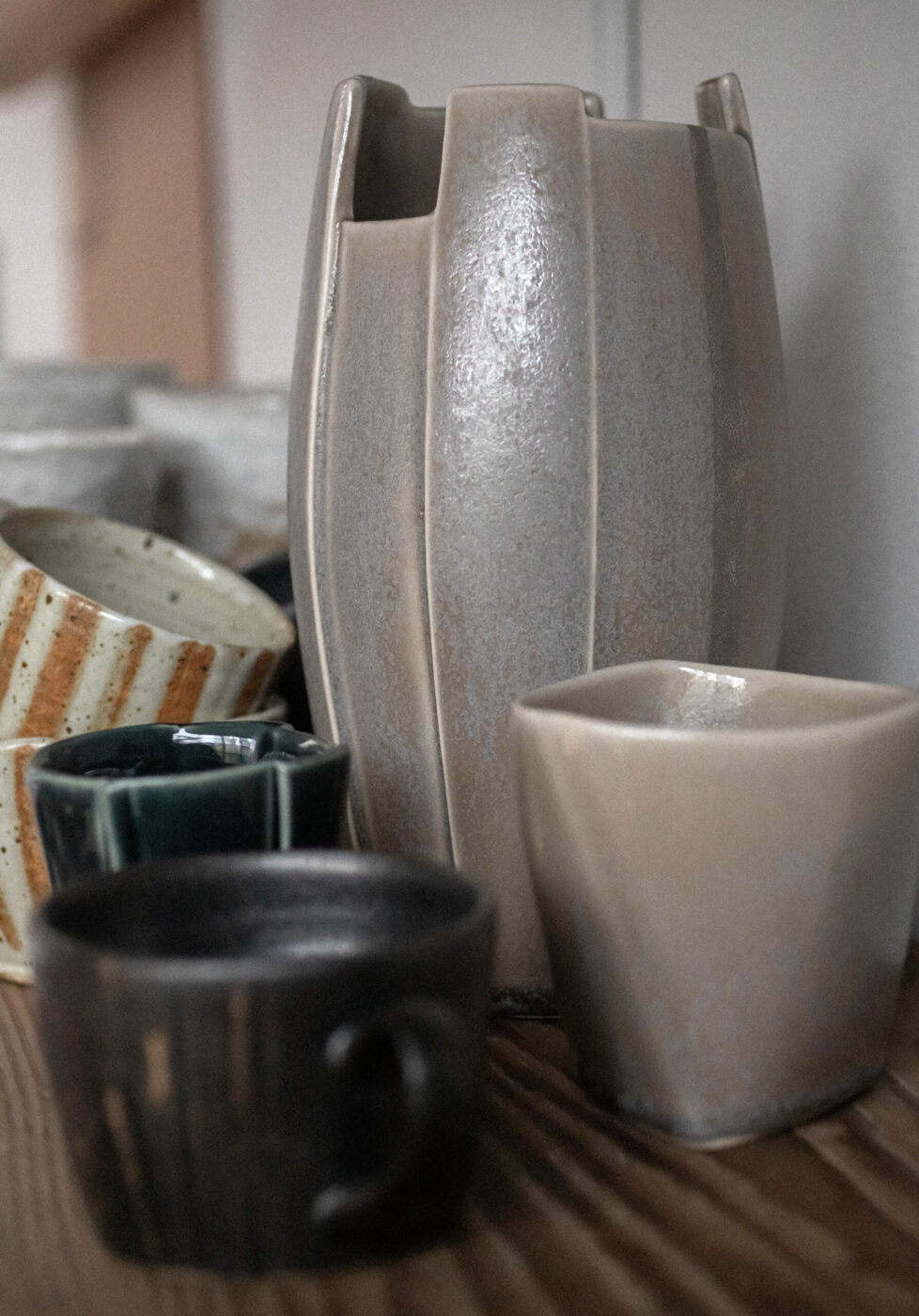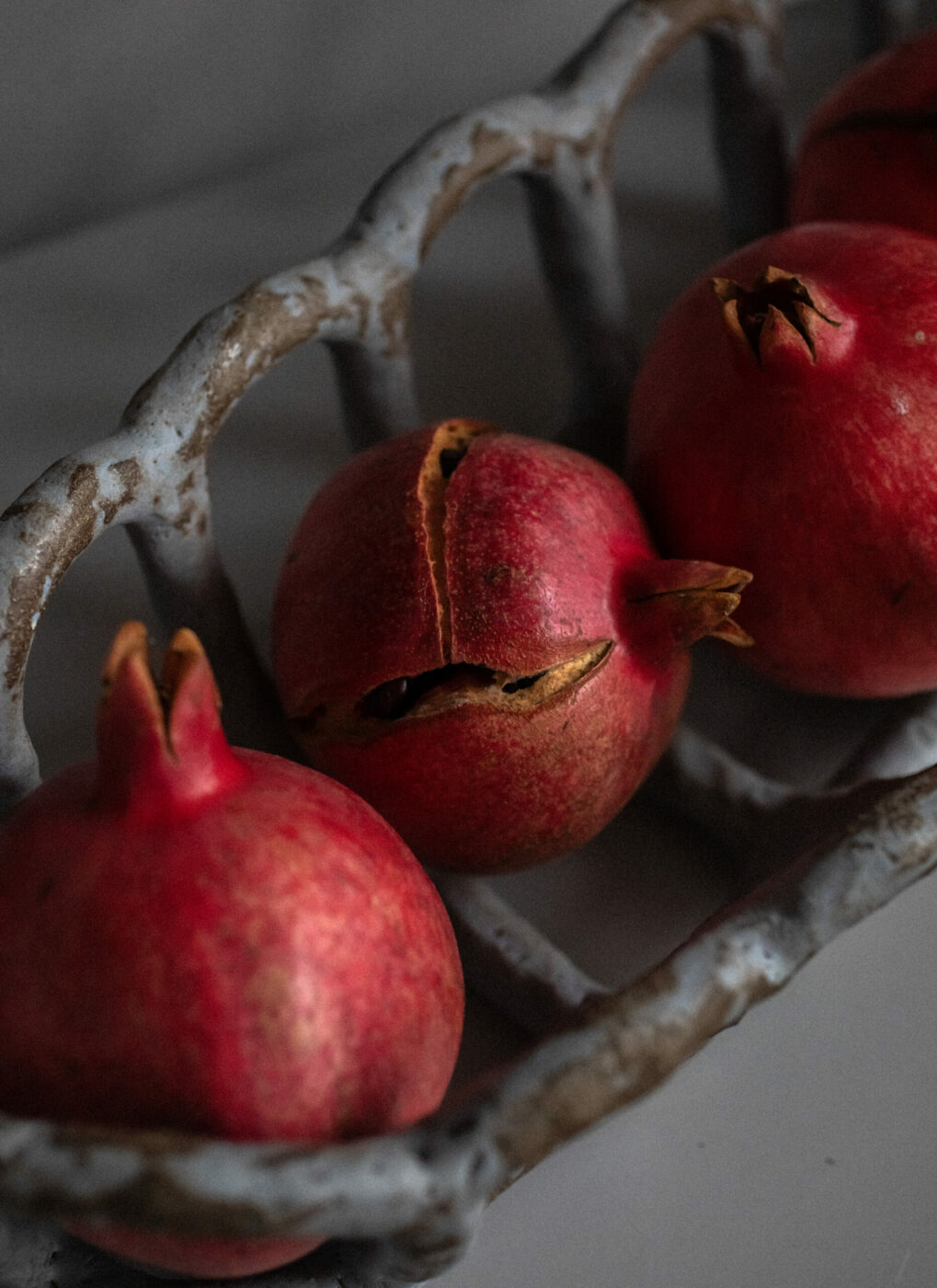If water is life, rain in California is so much more. It defines eternal cycles within cycles of boom and bust: dry summers broken by wet winters; multi-year droughts quelled by equally severe atmospheric deluges. Rain is a godsend, a destructive force and an indicator of long-term changes to our climate.
To ceramic artist Kala Stein, rain is all this — as well as a muse and co-creator. Water falling from clouds into the narrow breezeway outside her Sonoma studio, or drip-dropping from the lip of the gutter, rinses away pigments on the surface of small, handmade tiles she sets out to record its signature.
“The tiles are really a collaboration with the rainwater,” Stein says. “Depending on how much rain and how hard it’s raining, I get different effects on the surfaces.”
Some reflect a “harder drip,” where the rain has “eroded” away the white ceramic pigment she applies before placing the tile outside. Others show more of an “overall wash,” where the rainwater and pigment have “puddled” on the tile’s face.
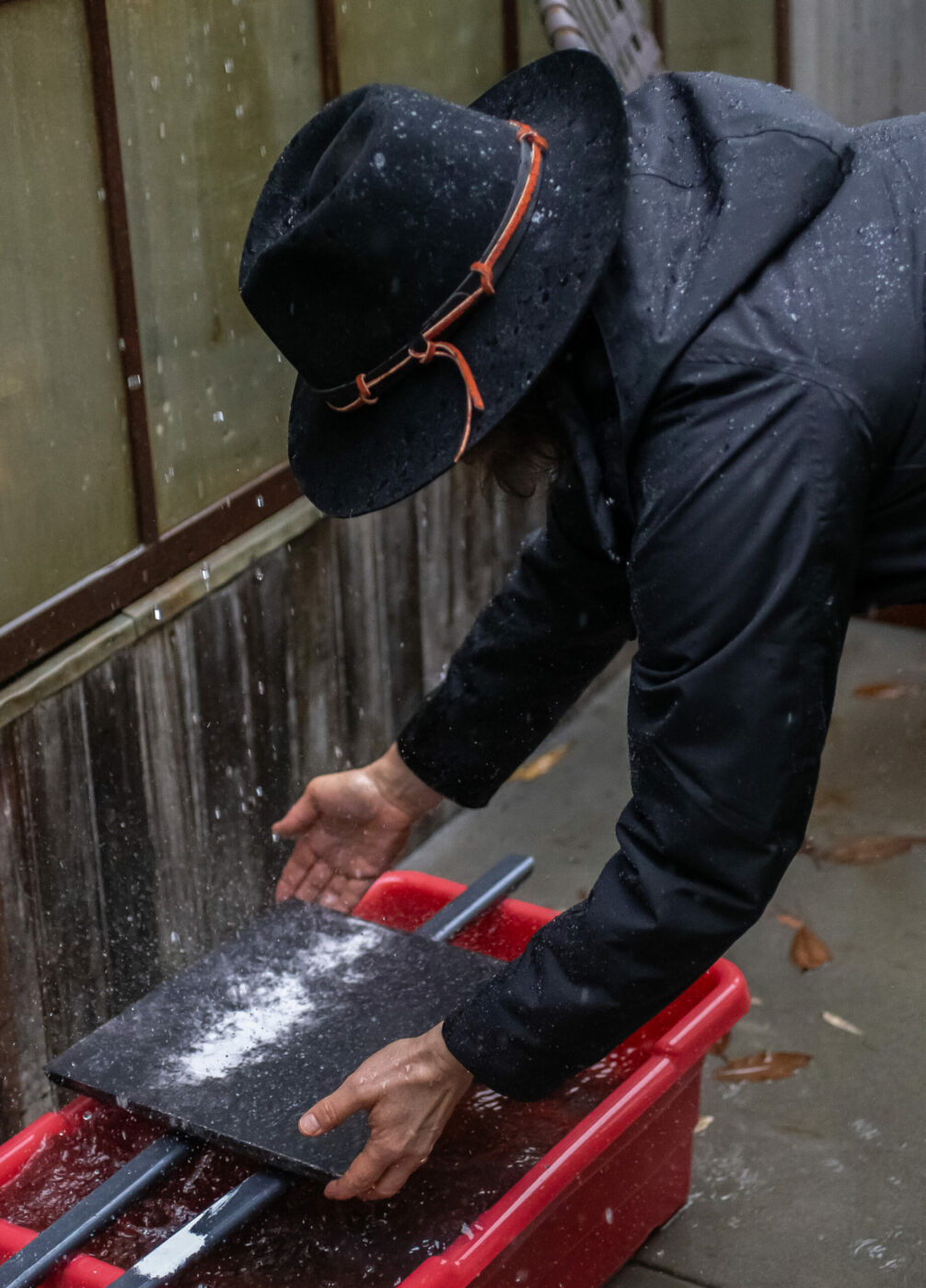
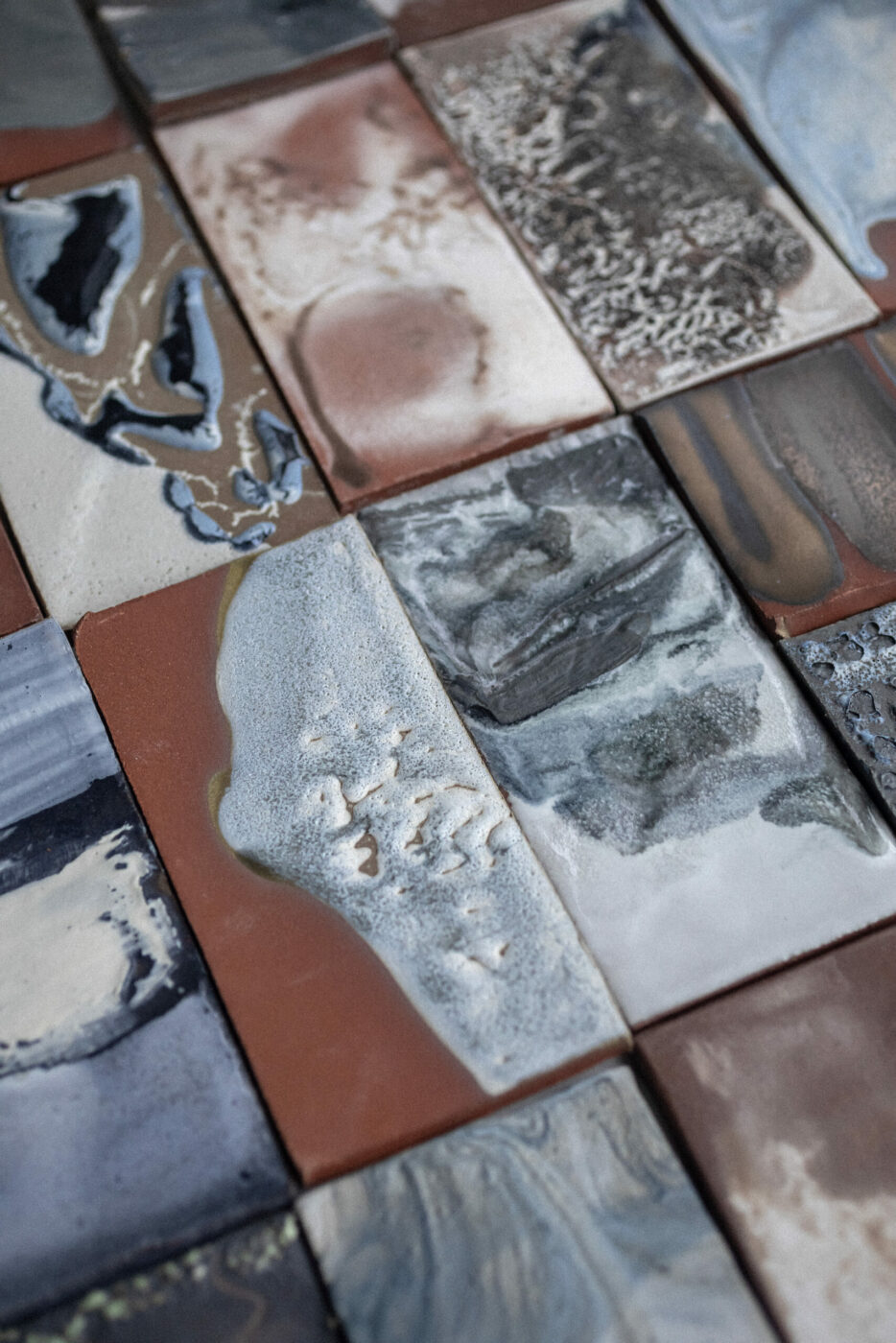
“After it reaches a point where I feel like the surface is interesting, I’ll remove it from the rain and fire it to make the material permanent,” Stein explains. She likens the process to creating a fossil record of a particular day and a particular expression of rain. And just as with a fossil, the imprinting material — bone or shell or rainwater — disappears, leaving only its shadow. Stein calls the series “Ghost Rain.”
In a recent show at downtown Sonoma’s Alley Gallery, adjacent to the La Haye Art Center, Stein hung “Ghost Rain” tiles in groups of three or eight or 20, each representing a single day and evoking a certain aesthetic or pattern. The rest was left to the eye of the beholder.
“All of my work is abstract, so people can see what they want when they look at it,” Stein says. “It’s interpretive.”
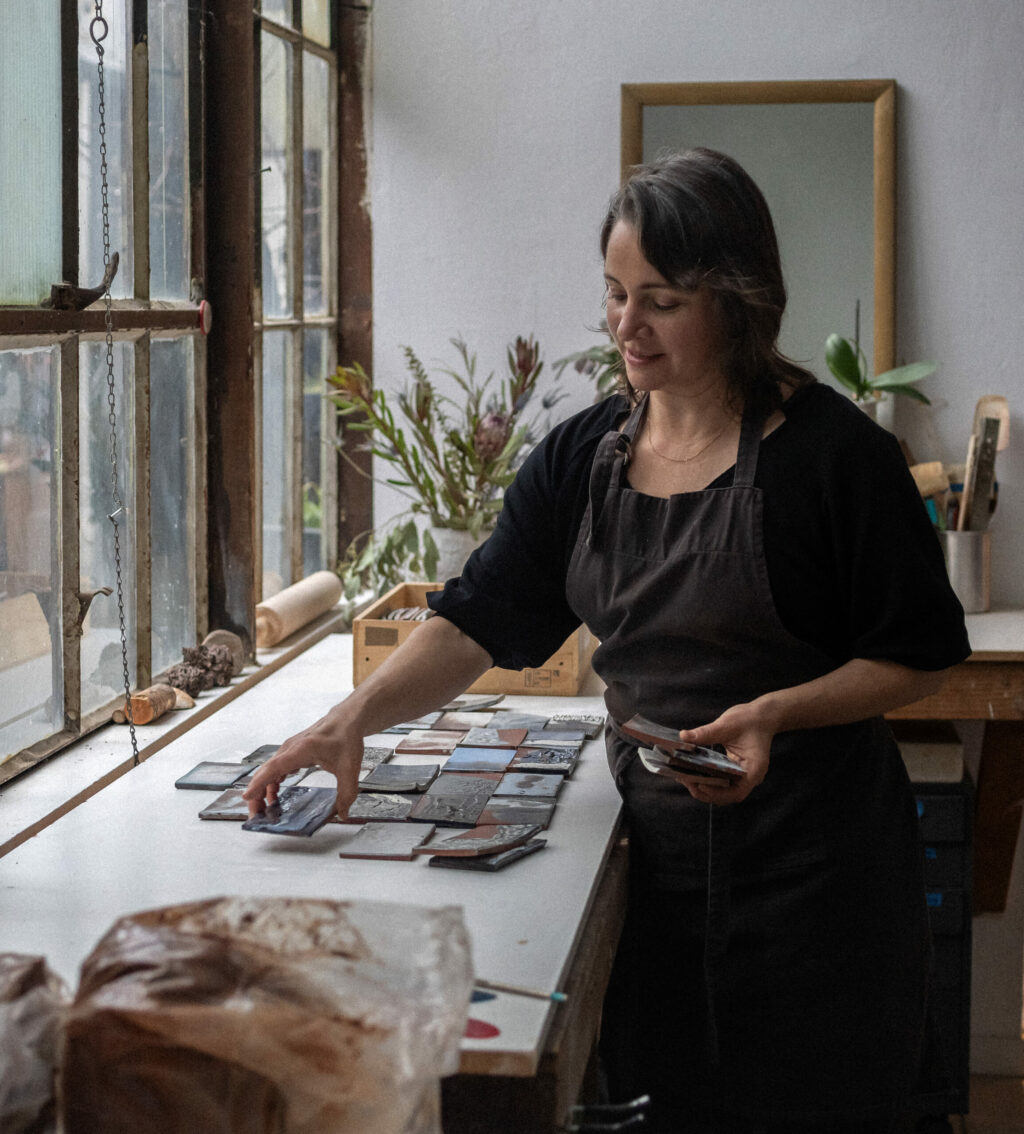

Not in doubt, however, are the works’ foundation in natural processes and materials, including the base tiles themselves, which Stein fires from a dark, iron-rich clay body. Displayed indoors, the finished products “bring a natural element into the built environment” without literally depicting specific scenes. “I’m trying to tap into the feelings of nature, more so than the imagery,” she notes.
The same can be said of another of Stein’s ongoing series, “Atmospheric,” whose pieces memorialize a larger-scale phenomenon: the storms themselves that bring the rain. She starts with satellite images of storms, such as the atmospheric river that hit California on Jan. 4, 2023, dropping as much as 6-8 inches of rain in some parts of the region.
Stein rendered a snapshot of that January storm taken from more than 500 miles above Earth upon a wall-mounted mosaic of terracotta tile, forming a massive installation 6 feet tall and 12 feet across. A marbled blue-and-white glaze shows cloudy spirals and undulations against a dark-red, Mars-like field. The result is both familiar enough to recall unbridled natural forces and alien enough to invite ambiguity and close inspection.
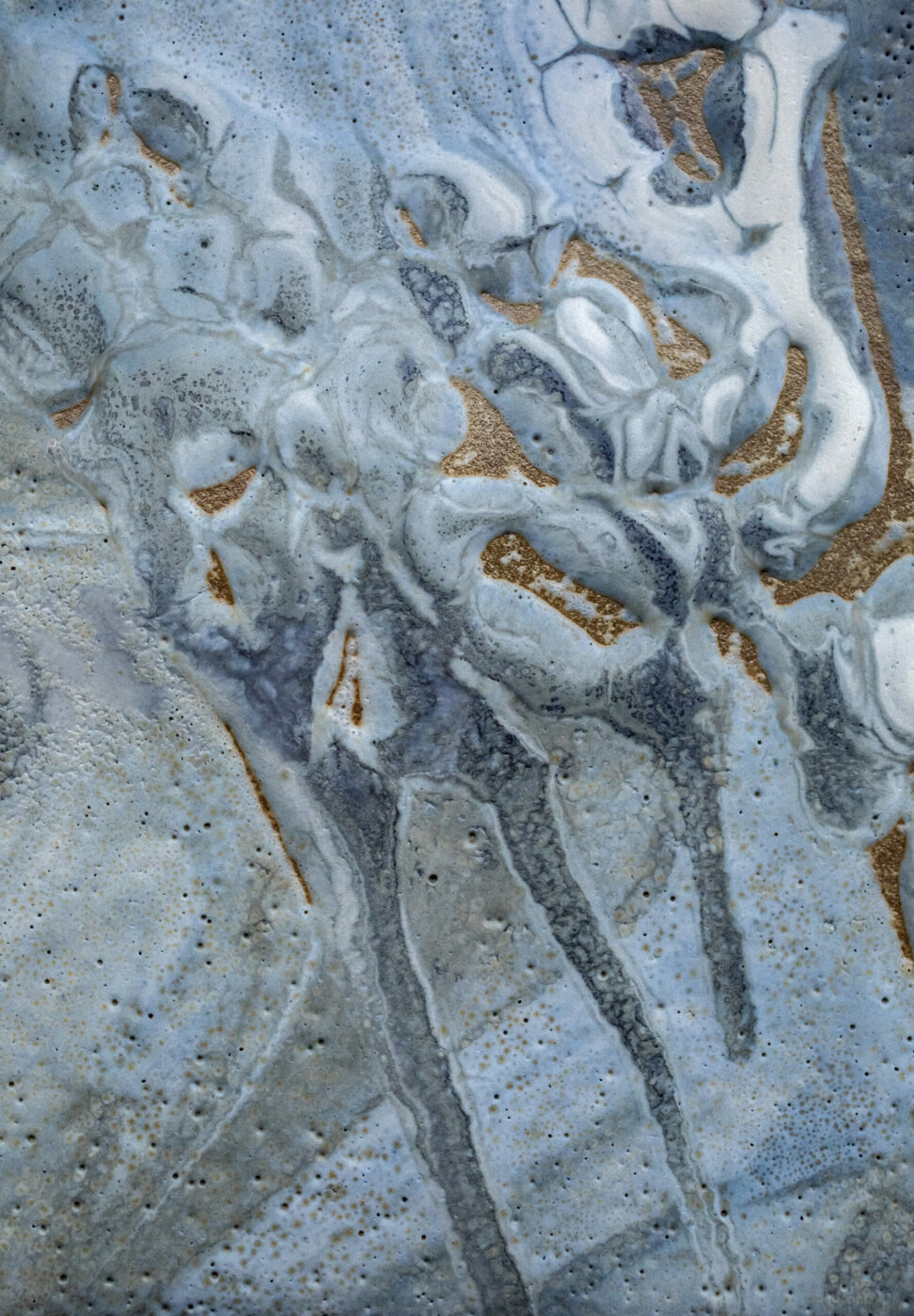
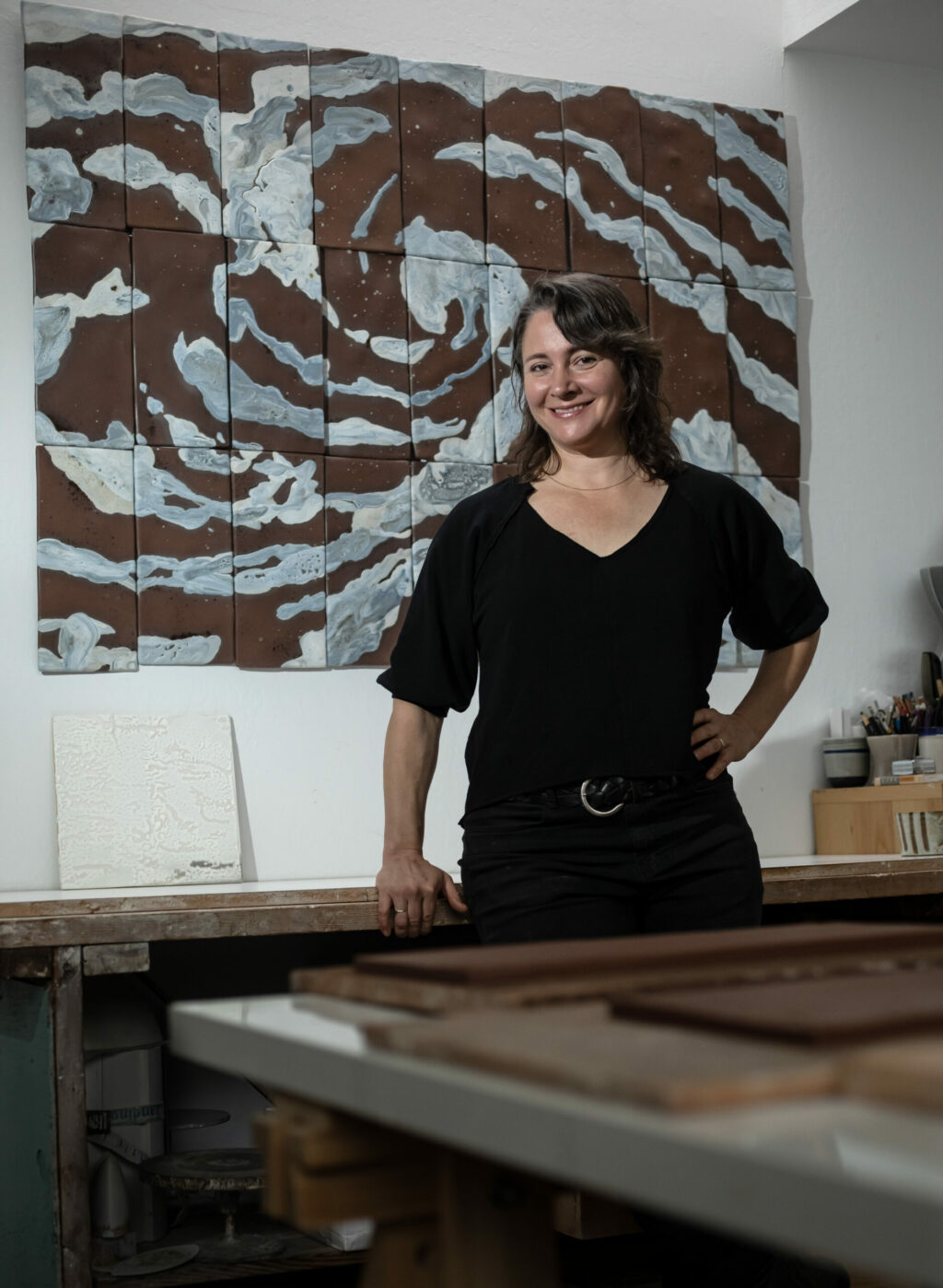
In any case, it is no romantic idyll. Stein calls the piece “an investigation of the tragedy of the Anthropocene Epoch that marks a moment in time, a collective experience of severe historic weather.”
Other works exploring dichotomies of natural-versus-disturbed and creative-versus-destructive take different forms, like the large white vessels with unruly surfaces inspired by satellite imagery of Hurricane Helene. Closer to home, her “Urns for Manzanita” are a tribute to all that burned during the Nuns, Tubbs, and Pocket wildfires of 2017. Crafted of fired black clay and a cracked glaze that recalls charred manzanita wood, the urns are designed to “evoke emotion and loss,” Stein says. At the same time, they are imbued with a sense of “rejuvenation and resilience.”
The 2017 wildfires were an introduction of sorts to California for Stein, who was raised in rural upstate New York by back-tothe- land, homesteading parents and developed an intimate yet pragmatic connection to the natural world. She spent many more years living up and down the East Coast before moving to Sonoma in 2015 to run the ceramics program at the Sonoma Community Center, where she still teaches.
“It’s a completely different experience living out here,” Stein says. “Experiencing the seasons here, and the geography, has been really influential and inspirational.”
So too has been witnessing the reality of the climate crisis.
“I want my work to address that, without overtly pointing to the problems with it. I’m basically celebrating it, maybe lamenting it — lamenting loss caused by natural disasters, the loss of our non-renewable resources. I’d like this work to be in conversation with those issues.”
Kala Stein’s ceramics studio is at La Haye Art Center, 148 E. Napa St. in downtown Sonoma, just off the square. The studio is open by appointment — to visit, email kala@kalastein.com. For information on ceramics workshops or to purchase her work, visit kalastein.com.



